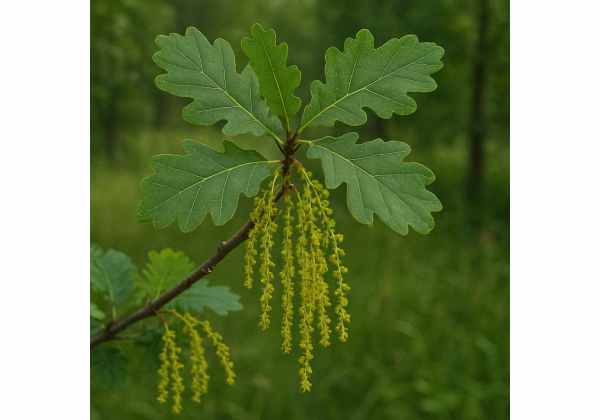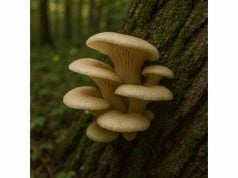Oak bark has been treasured for centuries as a versatile natural remedy, celebrated for its remarkable healing properties, rich active compounds, and wide array of uses. Brimming with tannins, flavonoids, and other beneficial constituents, oak bark supports healthy digestion, soothes inflammation, and protects the skin. Many traditional herbal systems rely on its medicinal properties to address everything from oral health concerns to mild infections. In this article, we’ll delve into oak bark benefits, key ingredients, medicinal properties, and various uses. By the end, you’ll see why oak bark remains a trusted go-to for countless individuals searching for a safe, time-honored herbal ally.
Table of Contents
- Comprehensive Identification of This Remarkable Tree-Derived Ingredient
- Key Phytochemicals and Dominant Constituents
- Health Advantages and Enduring Attributes
- Practical Applications and Critical Safety Tips
- Research Insights and Groundbreaking Findings
- FAQ
Comprehensive Identification of This Remarkable Tree-Derived Ingredient
Imagine walking through a majestic forest, enveloped by towering oak trees that have withstood the test of time—some for hundreds of years. These stalwart giants belong to the Quercus genus, which encompasses numerous species of oaks scattered across the Northern Hemisphere. Oak bark, harvested from these sturdy trunks and branches, has a distinctive outer surface that varies from species to species, but generally presents a rugged texture with deep grooves, ridges, or fissures.
Oak trees flourish in temperate climates, favoring regions with moderate rainfall and well-drained soils. While some species grow in more arid or mountainous areas, most oak varieties exhibit a preference for moist, fertile ground bathed in adequate sunlight. These trees can adapt to diverse conditions, but they typically reach their fullest grandeur in habitats that mirror their natural woodland origins.
Below is a friendly overview to help you visualize oak bark’s features and understand how it’s gathered:
- Physical Appearance: Oak bark possesses a rough, furrowed external layer. With age, cracks and crevices become more pronounced, often appearing in thick, overlapping scales that can be easily removed.
- Harvesting Considerations: Collectors typically strip bark from mature branches or fallen limbs to avoid injuring the living tree. Sustainably harvested bark ensures the continued growth and health of the oak.
- Botanical Classification: Oaks belong to the Fagaceae family, which also includes beeches and chestnuts. Taxonomists identify individual oak species by leaf shapes, acorn sizes, and bark variations.
Growth and Habitat
Oaks demonstrate remarkable adaptability. They inhabit a wide range of environments, from lowland forests teeming with wildlife to mountainous regions where the air grows thinner. Though certain oak species prefer cooler climates, others thrive in warmer areas. This incredible range partly explains why oak bark has become a globally recognized herbal staple. Whether in parts of Europe, Asia, or North America, people have discovered and documented the healing properties of oak bark for centuries.
Cultural and Historical Insight
The use of oak bark in traditional healing rituals traces back to ancient civilizations, including the Celts, who revered the oak as a sacred tree, and the Native Americans, who made extensive use of its bark for various medicinal preparations. Across cultures, oak bark stood out for its potency in treating skin wounds, diarrhea, and inflammation. Many healers would grind or boil the bark to prepare teas, poultices, or tinctures, relying on its unique chemical profile to address an assortment of health concerns.
Over time, modern science has confirmed many of these traditional benefits by uncovering the bark’s wealth of beneficial compounds. Although oak bark’s widespread recognition began in folk medicine, it transitioned smoothly into more structured herbal practices and eventually into modern natural health regimens. Now let’s explore what makes oak bark so chemically intriguing, and how its complex profile fuels its reputation as a potent herbal remedy.
Key Phytochemicals and Dominant Constituents
Oak bark is teeming with powerful compounds, each playing its own role in promoting wellness and fortifying the body against various stressors. Understanding these components helps us appreciate how oak bark can support various physiological functions and offer tangible health benefits.
Below is a friendly look at the major constituents often cited by experts and herbalists:
- Tannins
Tannins are arguably the most celebrated compounds in oak bark. They confer the characteristic astringency that gives oak bark tea its slightly bitter taste. More importantly, tannins tighten and tone tissues, which helps reduce inflammation and manage unwanted swelling. Their astringent action can be beneficial for skin irritations, mild injuries, and various digestive disturbances. Additionally, tannins may help limit certain bacterial and fungal activities, contributing to oak bark’s reputation for supporting overall cleanliness and balance. - Flavonoids
Flavonoids are lauded for their antioxidant capabilities, aiding in the battle against oxidative stress by neutralizing harmful free radicals. In oak bark, flavonoids such as quercetin and catechins appear to partner with other compounds to protect cells and support natural immunity. By offering antioxidant protection, these constituents may also help maintain a healthy circulatory system and limit age-related wear on the body. - Phenolic Acids
Oak bark hosts diverse phenolic acids, such as gallic acid and ellagic acid. These molecules exhibit antimicrobial, antioxidant, and anti-inflammatory actions, which work in tandem with tannins and flavonoids to extend oak bark’s healing repertoire. Phenolic acids can also reinforce the bark’s synergy, boosting oak bark’s antibacterial defense when used topically and internally. This balance of inflammation control and microbial support has made oak bark an enduring ally in herbal traditions worldwide. - Volatile Oils
Although oak bark contains only minimal amounts of essential or volatile oils, these trace elements still impart subtle aromatic qualities and can exhibit gentle antimicrobial and anti-inflammatory properties. When used in certain herbal preparations, these oils can contribute to the plant’s overall soothing effect. - Minerals and Trace Elements
Beyond organic compounds, oak bark also contains minerals such as calcium, magnesium, and potassium. These minerals are generally present in modest amounts, but they contribute to the bark’s comprehensive nutritional profile. Minerals can help maintain electrolyte balance and support other bodily processes when consumed as part of a balanced herbal regimen.
Why These Constituents Matter
The synergy of these compounds is crucial to understanding oak bark’s therapeutic reputation. Individually, tannins, flavonoids, and phenolic acids each carry measurable benefits. However, when they’re combined in the natural matrix of oak bark, they bolster and complement each other’s actions, resulting in a broader scope of positive effects.
In traditional herbalism, this synergy is often referred to as “the whole herb effect,” meaning that while individual chemicals matter, the true power often emerges from how these constituents interact. This is why oak bark extracts, powders, and whole-bark teas have maintained popularity for generations—people recognize that the bark’s robust protective and healing capabilities come from the harmonious interplay of multiple phytochemicals.
Quality Considerations
To fully experience these benefits, practitioners emphasize the importance of high-quality oak bark. Freshly harvested bark, or bark that has been properly dried and stored, preserves a higher concentration of active compounds. Exposure to excessive humidity, extreme temperatures, or direct sunlight can degrade the bark’s beneficial components. Hence, it’s essential to source oak bark from reliable suppliers who practice sustainable and careful harvesting methods, ensuring potency and purity in every batch.
Now that we’ve laid out the chemical foundations, it’s time to turn our attention to the next question: how exactly do these phytonutrients support your well-being? In the following section, we’ll talk about oak bark’s wide-ranging impact on different body systems and how it aligns with modern health goals.
Health Advantages and Enduring Attributes
Oak bark’s rich blend of tannins, flavonoids, phenolic acids, and minerals translates into an array of impressive health advantages. People have turned to this bark for centuries to address everything from minor infections to gastrointestinal issues—and modern scientific exploration has shed light on these traditional uses. Here, we’ll explore its notable benefits and key properties in a friendly, accessible way.
1. Soothing Inflamed Tissues
If you’ve ever sipped oak bark tea or used an oak bark compress, you’ve likely noticed its astringent, tightening quality. That’s due in large part to the tannins, which help reduce inflammation and calm irritated tissues. Whether you’re dealing with minor skin irritation or experiencing discomfort in your mouth or throat, oak bark’s anti-inflammatory attributes can offer gentle, reassuring relief.
- Real-Life Example: Sufferers of occasional sore throats might try gargling with cooled oak bark tea. The astringent compounds can help ease the raw, scratchy feeling, while also serving as a modest antimicrobial rinse.
2. Supporting Digestive Comfort
Oak bark’s tannins also play a valuable role in regulating digestive activity. By toning tissues within the gastrointestinal tract, it can be helpful for individuals grappling with mild diarrhea or loose stools. This effect makes oak bark a favorite recommendation among herbal practitioners for promoting balanced digestion and reducing occasional digestive upset.
- Practical Advice: If you want to use oak bark for digestive support, consider a low-strength infusion. Steeping about one teaspoon of dried bark in hot water for 10 minutes can deliver gentle, comforting relief. Always keep an eye on how your body responds and adjust accordingly.
3. Promoting Oral Health
Ever had bleeding gums or canker sores? Oak bark’s naturally astringent and antibacterial properties have historically been used in mouth rinses to help protect gums and freshen breath. These attributes may even help soothe sensitive teeth or reduce the chances of developing plaque.
- How to Use: Brew a mild oak bark tea, let it cool, and then swish it around your mouth for 30 seconds. It’s a simple, organic alternative to store-bought mouthwashes brimming with chemical additives.
4. Aiding Skin Care and Wound Support
A refreshing splash or compress of oak bark extract can provide relief from minor cuts, scrapes, or rashes. The combination of tannins, flavonoids, and antimicrobial phenolic acids supports the natural healing process, making it a popular choice for mild burns and bug bites.
- Handy Tip: If you have sensitive skin, do a patch test with a diluted oak bark infusion before widespread application. The astringent nature of tannins can be powerful, so a test helps ensure compatibility.
5. Potential Antioxidant Protection
Oxidative stress, caused by an imbalance between free radicals and antioxidants in the body, contributes to aging and various health challenges. Oak bark’s flavonoids and phenolic acids offer antioxidant support, helping your body maintain healthier cells and tissues. Over time, consistent intake of antioxidants may also play a role in overall cardiovascular wellness and metabolic balance.
- Lifestyle Consideration: Adding moderate amounts of oak bark to your herbal routine—whether as tea or a supplement—can provide a small but helpful antioxidant boost. Pair this with a diet rich in fruits, vegetables, whole grains, and other nutrient-dense foods for more comprehensive coverage.
6. Traditional Feminine Support
Many herbal traditions hold oak bark in high regard for women’s wellness. Some cultures use it to manage excessive vaginal discharge, thanks to its tissue-tightening and antimicrobial effects. Others turn to it for soothing care after childbirth or to help with mild menstrual cramps, though these uses should be supervised by an experienced herbalist or healthcare professional.
7. Overall Astringent Tonic
In essence, oak bark is an “astringent tonic,” meaning it can help tighten tissues, mitigate excessive secretions, and bolster protective barriers throughout the body. These attributes can prove valuable for everything from general external cleansing to more targeted internal uses.
- Friendly Advice: Because oak bark is quite potent, start with smaller doses or diluted preparations. This approach ensures you experience the bark’s benefits without overwhelming sensitive systems. Always observe how your body reacts, and talk to a healthcare provider if you have any concerns or existing conditions.
Balancing Modern Health Concerns
In today’s wellness circles, oak bark’s astringent, antibacterial, and anti-inflammatory properties often align with needs that arise from modern lifestyles. For instance, individuals with hectic schedules and a penchant for convenience foods may experience periodic digestive issues. And with so many people seeking natural skincare solutions, oak bark’s soothing, protective qualities can be a breath of fresh air compared to chemical-heavy alternatives.
Moreover, the rise in antibiotic resistance and concerns over chemical additives have spurred renewed interest in plant-based approaches to health. While oak bark is no panacea, its centuries-long track record and favorable safety profile highlight its worth considering for everyday concerns. Still, it’s best viewed as part of a holistic regimen that includes balanced eating, sufficient rest, and positive stress management.
A Note on Accessibility and Sustainability
While oak trees are common in many parts of the world, it’s still crucial to source oak bark sustainably. Overharvesting or destructive collection methods can harm tree populations and the environments they support. Reputable suppliers usually adopt responsible harvesting practices and maintain quality standards.
With these many benefits in mind, we can see why oak bark is a staple in traditional medicine chests around the globe. But how can you safely and effectively incorporate it into your routine? Up next, we’ll dive into practical applications, from teas and tinctures to topical products, along with essential safety considerations to keep in mind.
Practical Applications and Critical Safety Tips
Oak bark’s centuries-long legacy in herbal medicine speaks volumes about its versatility. Today, you can embrace its benefits through various preparations—teas, tinctures, ointments, and more. However, as with any potent herb, it’s essential to understand recommended practices, proper dosages, and possible cautions. Below, you’ll find an engaging look at the many ways to tap into oak bark’s healing properties while keeping safety front and center.
1. Internal Uses
Oak Bark Tea (Infusion)
Steeping oak bark in hot water for 10–15 minutes extracts a portion of its tannins, flavonoids, and phenolic acids. This tea is ideal for soothing mild digestive upsets, supporting oral health (as a gargle), or providing a general astringent boost. Most people find the taste earthy and somewhat bitter, but you can easily sweeten it with a touch of raw honey or add warming spices like cinnamon.
Dosage Tip:
- Start with about 1 teaspoon of dried bark per cup of boiling water.
- Limit yourself to 1–2 cups daily.
- Observe how you feel, and adjust accordingly.
Tinctures
Oak bark tinctures typically use alcohol or glycerin as a solvent to pull out the bark’s active compounds. This concentrated liquid can be taken in small drops, making it convenient for people on the go. Tinctures often come in standardized forms, making it easier to measure and track dosage.
Standard Approach:
- Common recommendations range from 1–2 mL up to three times a day.
- Always consult the product label and speak with a qualified herbalist or healthcare provider if you’re unsure.
2. External Uses
Compresses and Soaks
If you’re dealing with skin irritations, minor cuts, or inflammatory issues, an oak bark compress can offer quick relief. All you need is a strong oak bark tea or diluted tincture. Soak a clean cloth in the solution and apply it to the affected area for several minutes.
Possible Scenarios:
- Minor scrapes or insect bites
- Mild rashes, including those from poison ivy or similar irritants
- Swollen or achy joints (e.g., as a warm compress)
Sitz Baths
Oak bark’s astringent and anti-inflammatory properties make it an excellent addition to a sitz bath. This can be especially soothing for hemorrhoid discomfort or perineal soreness. Simply add a few cups of strong oak bark infusion to warm bathwater and soak for 10–15 minutes.
3. Oak Bark in Everyday Products
Beyond standalone recipes, you can spot oak bark extracts in various over-the-counter creams, lotions, and ointments. These formulations often target skin-tightening, anti-itch, or inflammatory concerns. Oak bark mouthwashes, meanwhile, can help freshen breath and support gum health. Always check labels for additional ingredients, and look for reputable manufacturers that prioritize quality testing.
4. Integration into Culinary Preparations?
While oak bark isn’t commonly used in culinary dishes—unlike certain other barks, such as cinnamon—it has had occasional historical use as a bittering agent in beverages or in folk recipes where its astringent flavor was an asset. If you’re feeling adventurous, you might experiment with a mild decoction added to soups or stews, but be aware of the pronounced bitterness. In general, oak bark’s culinary role remains limited compared to its medicinal uses.
5. Critical Safety Tips and Precautions
Sensitivity to Tannins
Oak bark is high in tannins, which can irritate sensitive stomachs or exacerbate existing gastrointestinal conditions like ulcers or reflux. If you have a known history of stomach issues, proceed cautiously. Also, tannins can hinder iron absorption, so be mindful if you’re on an iron supplement or have iron-deficiency anemia.
Medication Interactions
Although oak bark has a relatively modest interaction profile, the binding nature of tannins could theoretically interfere with how certain medications are absorbed. If you’re on prescription meds, particularly those requiring optimal bioavailability (like thyroid hormones), consider taking oak bark at a different time of day.
Pregnancy and Breastfeeding
Research on oak bark’s safety during pregnancy and breastfeeding is limited. While it has been used traditionally, it’s wise to consult a healthcare provider or midwife for personalized guidance. In many instances, experts may recommend alternative remedies with a clearer safety record.
Potential Allergic Reactions
Although rare, allergic reactions can occur. If you notice redness, itching, or swelling after using an oak bark preparation, discontinue use immediately and seek medical advice. As with any herb, a simple patch test for topical products is a prudent measure.
Dose Moderation
Overconsumption of oak bark, especially concentrated tinctures or potent teas, can lead to side effects such as nausea, vomiting, or digestive discomfort. The astringency can be quite intense, so adhering to recommended doses is crucial.
6. Expert Opinions and Professional Guidance
Reputable herbalists and integrative healthcare professionals often regard oak bark as safe when used appropriately. They may advise combining it with complementary herbs like chamomile, peppermint, or marshmallow root to balance out the astringent edge. Before starting any new herbal regimen, it’s wise to talk to a qualified professional who can help tailor advice to your unique body and circumstances.
Bringing Oak Bark Into Your Lifestyle
Incorporating oak bark can be a simple way to diversify your home remedy collection. Whether you prefer sipping a warm cup of tea on a chilly evening or using a topical compress to ease skin irritation, oak bark stands as a flexible ally in natural health. Keep usage moderate, pay attention to quality sourcing, and remain mindful of any signs of discomfort. With these steps, you’ll be well on your way to safely unlocking oak bark’s time-tested benefits.
Research Insights and Groundbreaking Findings
Although oak bark’s presence in folk and traditional medicine is well-documented, modern science has also begun to shine a spotlight on its therapeutic potential. Below, you’ll find a selection of notable studies that delve into oak bark’s active compounds and investigate its range of applications. Each example highlights the growing scientific interest in this herb, bridging centuries of anecdotal evidence with contemporary methods of analysis.
- (2012) Study on the Antimicrobial Activity of Quercus robur Bark Extract
- Journal: Journal of Medicinal Plants Research
- Key Findings: Researchers tested various oak bark extracts against common bacterial strains like Staphylococcus aureus. Results indicated a meaningful antimicrobial effect, particularly due to tannins and phenolic acids.
- Valuable Note: This provides support for oak bark’s longstanding use in addressing mild wounds, infections, and other conditions where bacterial overgrowth may be a concern.
- (2015) Polyphenolic Content Analysis in Quercus Species
- Journal: Phytochemistry and Pharmacology Bulletin
- Primary Discovery: A chemical profiling study revealed high polyphenolic levels in different oak species, with tannins and flavonoids being the dominant constituents.
- Significance: The research affirmed that these compounds contribute antioxidant and anti-inflammatory benefits, correlating with oak bark’s popular use as a protective and healing agent.
- (2018) Oak Bark’s Role in Oral Health
- Journal: International Dental and Oral Care Sciences
- Focus: Investigators explored the mouth-rinse potential of oak bark extracts in reducing plaque formation and gum inflammation.
- Conclusion: Participants using oak bark rinses noticed improvements in gum health. The bark’s astringent quality was cited as a major contributor, reinforcing the idea that oak bark can be an effective, natural oral care supplement.
- (2020) Efficacy in Supporting Digestive Balance
- Publication: Herbal Therapeutics International
- Overview: In this review article, authors collated data from multiple small-scale clinical trials that used oak bark preparations for diarrhea management.
- Result: The analyses showed consistent outcomes of shortened duration and intensity of diarrheal episodes. These findings underscore the bark’s value in gastrointestinal health, especially for mild, non-chronic cases.
- (2023) Tannins and Modern Medicinal Innovations
- Journal: Advances in Phytochemical Research
- Core Insight: This cutting-edge paper examined how tannin-rich extracts like those from oak bark could be harnessed for new medicinal applications, particularly in wound dressings and biodegradable antimicrobial coatings.
- Implications: The data suggest that oak bark’s legacy is not confined to folklore—modern science is propelling it into innovative healthcare domains.
The Big Takeaway
Collectively, these studies reinforce what countless herbal enthusiasts have known all along: oak bark’s blend of tannins, flavonoids, and phenolic acids can offer tangible benefits for numerous health issues. However, it’s equally vital to acknowledge that more large-scale, rigorous clinical trials are needed to confirm these findings. If you’re thinking of using oak bark as a natural remedy, consider these research insights a promising but still evolving foundation.
FAQ
Below are some of the most frequently asked questions about oak bark. Each answer is intentionally brief, offering a concise snapshot to guide your understanding and spark further exploration.
Can oak bark help with hemorrhoids?
Oak bark’s astringent nature may relieve mild swelling and itching in the anal area. Many people prepare a sitz bath with oak bark tea, soaking for 10–15 minutes to soothe discomfort. Always discuss persistent symptoms with a medical professional.
Is it safe to take oak bark daily?
Moderate use of oak bark tea or supplements is usually fine, but extended or excessive intake could irritate the stomach or reduce iron absorption. Consult an expert for guidance on long-term consumption, especially if you have underlying health conditions.
How do I store dried oak bark?
Keep dried oak bark in an airtight container away from light, heat, and moisture. This approach preserves its active compounds, ensuring that your supply remains potent for longer periods, typically six months to a year.
Can children consume oak bark preparations?
In general, oak bark preparations should be used cautiously in children. While a diluted tea might be safe, consult a pediatrician or qualified herbalist first, especially if a child has unique health needs or sensitivities.
Will gargling oak bark tea help with bad breath?
Yes. Gargling or rinsing with cooled oak bark tea may help reduce bacteria and tighten oral tissues. Its tannins and antibacterial properties can freshen breath naturally, though regular brushing and flossing remain essential for dental hygiene.
Disclaimer
The information presented in this article is for educational purposes and does not replace professional medical advice. Always consult a qualified healthcare provider for personalized recommendations or if you have questions regarding specific health issues or conditions.
Feel free to share this article on Facebook, X (formerly Twitter), or wherever you connect online. Let’s keep spreading the word about safe, time-honored herbal remedies like oak bark, and don’t forget to follow us on social media for more natural wellness insights!

















